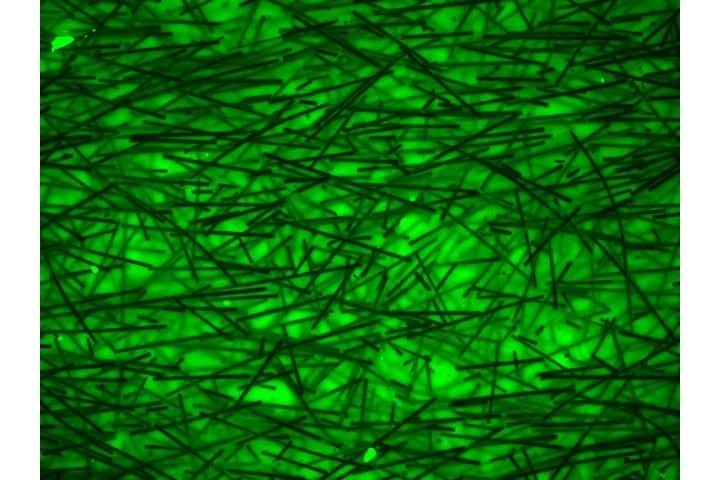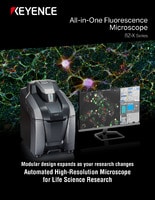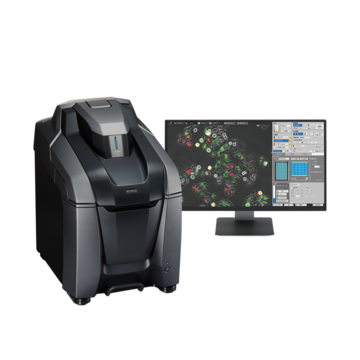Fluorescence Microscopes
Evaluating Structure of Composite Materials
-
Tags:
- Materials Chemistry
Built-in darkroom, compact design

Fluorescent observation of carbon fibers
Composite materials such as carbon fibers and cellulose are attracting attention under increasing needs for weight reduction.
At a glance, these materials are solid black and how they are mixed cannot be evaluated.
Even with microscopy, fibers and other materials cannot be distinguished in brightfields.
But, there is a way to check how such composite materials are mixed.
Using the All-in-One Fluorescence Microscope BZ-X800
- By using fluorescence, it is possible to distinguish between carbon fibers and other components according to whether they shine.
- Fluorescence observation can be performed easily because no darkroom is necessary.
- We can offer unprecedented analytic techniques, including analysis of the length, directionality, and mixing condition of carbon fibers as well as evaluations of product status after use.
- Furthermore, the cell count function enables, for example, area measurement of carbon fibers.



